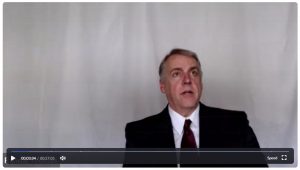The need to reform parking requirements as well as the intricacies of adopting a system whereby motorists pay for distance travelled instead of forking out gas taxes at the pumps were two of the issues discussed by U.S. experts in the fields recently during separate online webinars on mobility pricing.
The webinars were hosted by Transport Futures, which brings together government, stakeholders from business, labour, not-for-profit organizations, academia and the public to talk about what transportation infrastructure and multi-modal technology is needed and where to get the money for it.
In all, six conversations and interactive sessions were held from Nov. 16 to Dec. 19 with experts from Canada, U.S., Holland and Sweden. The Daily Commercial News and 407ETR sponsored the sessions.
Randal Thomas, administrator of RUC America, which is studying the viability of a national per-mile charging system in the U.S. based on actual road use, weighed in on the benefits of the idea and explained that people have difficulty understanding the concept, so communication is the key.
Thomas led a team that implemented a road usage charge pilot in Oregon. Utah and Hawaii now have active programs. Several other states have launched pilots and others have expressed interest.
“Probably the biggest issue or recommendation is the communication aspect, which also is part of public acceptance,” Thomas told the audience. “Through focus groups, we have learned that the public does not really understand it. They have no concept, then you’ve got the concerns that come up with privacy and equity. So, it really is the communication piece and public acceptance piece.”
One hurdle to overcome, he notes, is the notion that a resident who lives in a rural area drives more than an individual in an urban setting, so the system is unfair. But he argues that is not the case.
“We’ve done several studies looking at the rural-urban issue and all the studies so far have shown that the rural drivers likely pay less. The urban drivers tend to drive quite a bit to work. They jump in their car and run out and go here and there. But the rural drivers tend to consolidate their trips.
“They just don’t get in the car and drive for miles and miles just to go to the store and come back. They consolidate.”

He also shared the road usage charges are only collected from trips on public roads so, for example, if a resident lives on a ranch and drives a distance to get to a road, charges would not apply.
Thomas presented survey results that indicate support for such a program grows as a pilot is rolled out. While people are initially worried about privacy, their personal freedom and have a distrust of government, those fears subside when they learn more about how the program operates. In Oregon, survey results show people now believe road usage charges are a much fairer system.
In another session, David King, an associate professor at Arizona State University, addressed the state of parking policies and how they raise housing costs and inhibit the type of cities people want.
He spoke about the traditional approach to vehicle parking, how it is changing as a result of new policies and technical innovations, and the fact people are yearning for more liveable neighbourhoods.
“Should we reform parking requirements? The answer is, ‘Yes, we should reform parking requirements,’” he says.
In the U.S, he notes, parking requirements are attached to the use of a building which dictates the number of spaces required. So, when a new building is proposed, arrangements must be made for adequate parking which can lead, for example, to a nearby building being torn down to accommodate a parking lot.

Surface parking is cheaper to build, he says, so an area can end up with a lot of above-ground lots, which not only moves parking away from the business but also changes what people want in the area.
King prefers a blanket parking policy that would have limited or very low parking requirements for developers because “what we want to do from a local regulation is we want to make it as easy as possible to build the stuff we want and make it is hard as possible to build the stuff we don’t want.”
The other issue, according to King, is that municipalities often have more space than they need for parking. In the Phoenix metropolitan area, for example, there are four parking spaces for every car.
“There’s a parking space for everywhere you want to go. All of that parking adds up to an awful lot of space.”
King says a common practice in the U.S., and he suspects it’s the same in Canada, is to bundle parking fees into rents, but if it was separate there’d be an incentive for residents not to have two cars.
“They’re not going to pay for something they’re not going to use.”
A Metrolinx green paper in 2008 suggested user road pricing, parking fees and other mobility pricing measures are one way to positively motivate sustainable transportation choice amongst road users in the Greater Toronto and Hamilton Area and help pay for the agency’s $5-billion plan.
Presently, Ontario drivers don’t pay directly for the kilometres they travel – other than on Highway 407 which accounts for less than 152 kilometres of the province’s 203,000 kilometres of roads.
The final Transport Futures mobility pricing conversation takes place on Dec. 19 and will feature Brendon Hemily of Hemily & Associates in Toronto. It will discuss Transit Fare Policy Challenges and Strategies. Register here.



Recent Comments
comments for this post are closed